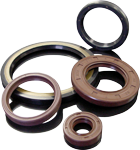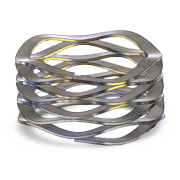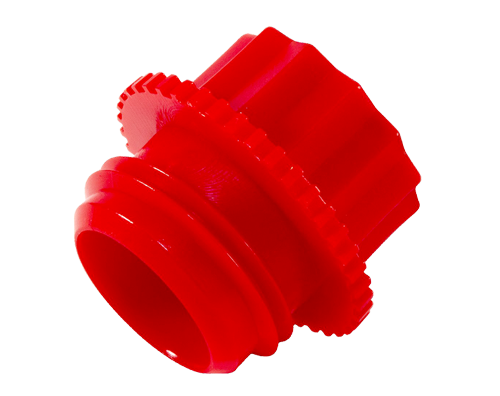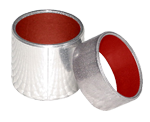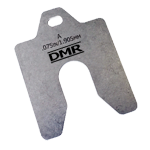Home >> Seal >>O-Rings >> Causes of O-Ring Failure
Causes of O-Ring Failure
Like any device subject to judgment in design, or to human error during installation, O-ring seals are liable to failure. The following brief summary of O-ring failure patterns is intended to give the designer/engineer a brief overview of the more common types of failure and a listing of recommended corrective actions. While there are a number of different types and causes to seal failure, we intend here to cover only the types encountered most frequently.
Why an O-Ring Fails
The failure of an O-ring in service can usually be attributed to a combination of causes. Most often, with the absence of one of the conditions existing at the time of failure, the O-ring would have continued performing. It is important to maximize sealing life and reliability by reducing the probability of seal failure at the onset by the use of good design practices, proper compound selection, pre-production testing, and continued education and training of assembly personnel.
Technical Resources
- O-Ring Catalogue
- Comparison of Properties
- Temperature & Durometer
- Elastomers
- Fluid Compatibility Selector
- Groove Design
- Shelf Life and Storage
- Causes of O-Ring Failure
- O-Ring Design & Lubrication
- Glossary of O-Ring Terms
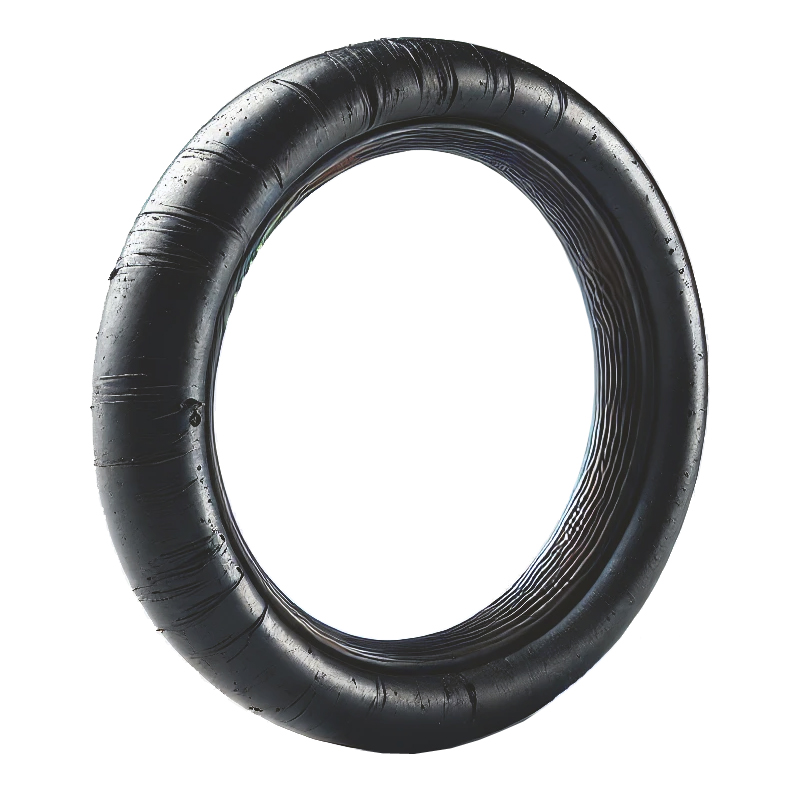
Extrusion And Nibbling
Extrusion and nibbling of the O-ring is a primary cause of seal failure in dynamic applications such as Hydraulic Rod and Piston seals. This form of failure may also be found from time to time in static applications subject to high pressure pulsing which causes the clearance gap of the mating flanges to open and close, trapping the O-ring between the mating surfaces.
Failure Analysis
In general, EXTRUSION and NIBBLING are caused by one or more of the following conditions:
- Excessive clearances.
- High pressure (in excess of system design or high pressure excursions).
- O-ring material too soft.
- Degradation (swelling, softening, shrinking, cracking, etc.) of O-ring material by system fluid.
- Irregular clearance gaps caused by eccentricity.
- Increase in clearance gaps due to excessive system pressure.
- Improper machining of O-ring gland (sharp edges).
- Improper size (too large) O-ring installed causing excessive filling of groove.
Suggested solutions to the causes of Extrusion and Nibbling listed above are:
- Decrease clearance by reducing machining tolerances.
- Use back-up devices.
- Check O-ring material compatibility with system fluid.
- Increase rigidity of metal components.
- Replace current O-ring with a harder O-ring.
- Break sharp edges of gland to a minimum radius 0.002 inches.
- Insure installation of proper size O-rings.
Identification Of Extrusion Failure
A typical example of O-ring extrusion is when edges of the ring on the low pressure or downstream side of the gland exhibit a “chewed” or “chipped” appearance.
In an O-ring that has failed due to nibbling, it may have the appearance that many small pieces have been removed from the low pressure side. In some forms of extrusion, more than 50% of the O-ring may be destroyed before catastrophic leakage is observed.
Compression Set
Probably the most common cause of O-ring failure is compression set. An effective O-ring seal requires a continuous “seal line” between the sealed surfaces. The establishment of this “seal line” is a function of gland design and seal cross-section which determines the correct amount of squeeze (compression) on the O-ring to maintain seal integrity without excessive deformation of the seal element. There are a number of factors that can contribute to compression set failure of an O-ring seal. They are listed below.
Failure Analysis
In general, COMPRESSION SET is caused by one or more of the following conditions:
- Selection of O-ring material with inherently poor compression set properties.
- Improper gland design.
- Excessive temperature developed causing the O-ring to harden and lose its elastic properties.
- Volume swell of the O-ring due to system fluid.
- Excessive squeeze due to over tightening of adjustable glands.
- Incomplete curing (vulcanization) of O-ring material during production.
- Introduction of fluid incompatible with O-ring material.
Suggested solutions to the causes of compression set are:
- Use “LOW-SET” O-ring material whenever possible.
- Select O-ring material compatible with intended service conditions.
- Reduce system operating temperature.
- Check frictional heat build-up at seal interface and reduce if excessive.
Inspect incoming O-ring shipments for correct physical properties.
Identification of Compression Set Failure
A typical example of classic O-ring compression set in simplistic terms: the O-ring ceases to be “O” shaped and is permanently deformed into a flat sided oval, the flat sides of which were the original seal interface and under compression before failure.
Spiral Failure
Spiral failure of an O-ring is often found on long stroke hydraulic piston seals and to a lesser degree on rod seals. This type of O-ring failure is caused when the seal becomes “hung-up’’ at one point on its diameter (against the cylinder wall) and slides and rolls at the same time. The resultant twisting of the O-ring as the sealed device is cycled finally causes the seal to develop a series of deep spiral cuts (usually at a 45° angle) on the surface of the seal.
Failure Analysis
As stated above, spiral failure is generally caused by an O-ring both sliding and rolling at the same time. Conditions which may cause this to occur are:
- Eccentric components.
- Wide clearance combined with side loads.
- Uneven surface finishes.
- Inadequate or improper lubrication.
- O-ring too soft.
- Stroke speed (usually too slow).
- Improper installation (O-ring pinched or rolled).
Suggested solutions to the causes of spiral failure are as follows:
- Improve surface finish of sealed assembly at dynamic interface (Cylinder Bore, Piston Rod).
- Check for out-of-round components (Cylinder Bores especially).
- Provide proper lubrication.
- Replace with a harder O-ring.
- Consider use of alternate seal shapes
Identification Of Spiral Failure
You will see the typical cuts that gave this type of O-ring failure its name.
Explosive Decompression
With the advent of the space age we are seeing this type of O-ring failure with increasing frequency. It might be termed O-ring embolism, in that after a period of service under high pressure gas, when the pressure is reduced too rapidly, the gas trapped within the internal structure of the O-ring expands rapidly, causing small ruptures or pitting on the O-ring surface.
Failure Analysis
Explosive decompression, or gas expansion rupture is caused by high pressure gas trapped within the internal structure of the elastomeric seal element. Rapid decrease in system pressure causes the trapped gas to expand to match the external pressure and this expansion causes blisters and ruptures on the seal surface. If the volume of trapped gas is small, the blisters may recede as the pressure is equalized with little effect on seal integrity. Excessive trapped gas may cause total destruction of the seal.
Suggested solutions to explosive decompression are:
- Increase decompression time to allow trapped gas to work out of seal material.
- Choose a seal material with good resistance to explosive decompression.
- If problem persists and pressures are very high consider use of metallic ‘O’ Ring or ‘C’ Ring.
Identification Of Explosive Decompression Failure
The seal subjected to explosive decompression will often exhibit small pits or blisters on its surface. In severe cases, examination of the internal structure of the O-ring will reveal other splits and fissures.
Abrasion
Another rather common type of O-ring failure is abrasion. This usually is found only in dynamic seals subject either to reciprocating, oscillating, or rotary motion. Possible causes of O-ring abrasion are listed below.
Failure Analysis
In general, abrasion of O-ring seals is caused by one or more of the following:
- Improper finish of the surface in dynamic contact with the O-ring. This surface finish may be too rough, acting as an abrasive, or too smooth, causing inadequate lubrication due to inability of surface to hold lubricant.
- Improper lubrication provided by system fluid.
- Excessive temperatures.
- Contamination of system fluid by abrasive particles.
Suggested solutions to problems caused by abrasion are:
- Use proper surface finish.
- Provide adequate lubrication by use of proper system fluid.
- Consider use of internally lubricated O-rings to reduce friction and wear.
- Check for contamination of fluid and eliminate source. Install filters if necessary.
- Consider changing to an O-ring material with improved abrasion resistance.
Identification Of Abrasion Failure
The O-ring that has failed due to wear through abrasion usually exhibits a flat area on the side of the seal which was in contact with the dynamic surface. Frequently there will be wear lines on this flat surface parallel to the direction of motion. Abrasion failure may be differentiated from compression set failure in that with abrasion, only one side of the O-ring will be flat or worn while with compression set failure, both sides of the O-ring are equally deformed.
Installation Damage
Many O-ring failures can be directly attributed to improper installation. In spite of its simple appearance, the O-ring is a precision device requiring care during installation. Some of the more frequent causes of O-ring failure due to careless handling are listed below.
Failure Analysis
Damage to an O-ring during installation can occur when:
- There are sharp corners on mating metal components such as the O-ring gland or threads over which the O-ring must pass during assembly.
- Insufficient lead-in chamfer.
- Blind grooves in multi-port valves.
- Oversize O-ring on piston seal application.
- Under size O-ring on rod application.
- O-ring twisted/pinched during installation.
- O-ring not properly lubricated before installation.
- O-ring dirty upon installation.
- O-ring gland and/or other surfaces over which O-ring must pass during assembly contaminated with metal particles.
- General carelessness.
Probably the best way to prevent damage to O-rings during installation is the use of good common sense. There are some specific solutions which are listed below:
- Break all sharp edges on metal components.
- Provide a 20 degree lead-in chamfer.
- Check all components for cleanliness before installation.
- Tape all threads over which the O-ring will pass.
- Use an O-ring lubricant.
- Double check O-ring to insure correct size and material.
- Be CAREFUL.
Identification Of Installation Failure
It is difficult to properly illustrate the many possible results of installation failure. One of the more common failure modes is the “Skiving’’ of the O-ring surface due to cutting by metal components. Those cuts are usually very clean as if made with a very sharp knife. Another indication of bad installation will be small cuts or notches on the O-ring. In almost all cases, the damage will appear on the surface of the O-ring away from the bottom of the O-ring groove.
Other Causes of O-Ring Failure
Although not illustrated here, there are several other possible causes of O-ring failure. They are:
- Weather and ozone degradation.
- Heat aging and oxidation.
- Loss of plasticizer.


